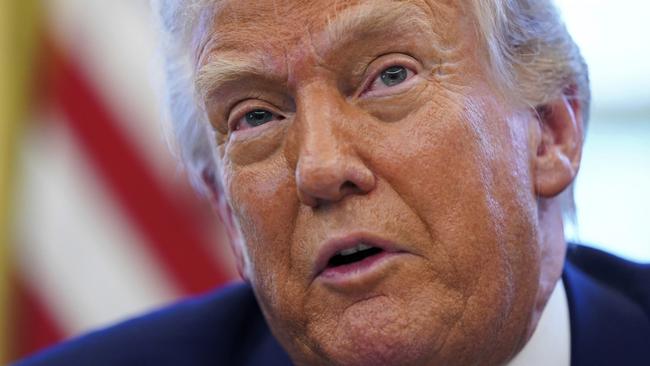Whiplash reveals Donald Trump as the king of chaos as tariff about-face extends policy chaos


Hours after his reciprocal tariffs entered into force, Donald Trump changed his mind in another sign the US President thrives on chaos.
Trump was forced to shift his approach because of the market reaction to his Liberation Day rebalancing of the global trading system, which wiped more than $6.5 trillion from US stocks and threatened a global recession.
Tumbling markets, at least in this instance, have acted as a safeguard against the extremes of the “America First” agenda.
Building for days, the pressure finally became too much for Trump. He needed to act.
But it is wrong to view the recalibrated tariffs as a backdown – it is merely an extension of the chaos.
Trump is now engaged in a destructive game of escalation with Beijing by increasing tariffs on China to 125 per cent.
It is uncertain at this time how Xi Jinping will respond or where this trade war will lead.
Meanwhile, the rest of the world will be hit with a universal 10 per cent tariff. While the higher reciprocal tariffs are paused for 90-days, Australia’s relative advantage has also evaporated.
Australia will be treated like any other nation despite its free-trade agreement with Washington and America’s longstanding trade surplus with Canberra.
Further tariff decisions will continue to be made in coming days, weeks and months. And it is likely Trump will continue to change his mind – denying a stable economic environment for US business owners and households.
Days ago, the President had doubled down on his reciprocal tariffs. He urged Americans to “hang tough” and promised his economic revolution would make the US the “most dominant country economically in the world.”
His April 2 executive order made clear there was a national emergency requiring swift action to restore reciprocity in America’s trading relations because of the “extraordinary threat to the national security and economy of the United States”.
The sudden about-face must cast doubt over how serious an emergency this really is, given the abrupt announcement of a 90-day pause.
All the signs are that the announcement was a reactive decision made on the fly, driven by fears the trade agenda would wreak havoc on the economy.
It was announced in typical Trump style – on social media – while US Trade Representative Jamieson Greer was defending the tariffs before the house ways and means committee.
Earlier, the US President had watched JPMorgan Chase chief executive Jamie Dimon warn Fox News that a recession was the “likely outcome” of the Liberation Day tariff agenda.
Explaining the course correction later in the day, Trump said people were “getting yippy” and “a little bit afraid”.
There is also no guarantee of stability or certainty going forward, with Trump saying future exemptions to his tariffs would be determined by “instinct, I think, (rather) than anything else”.
Wall Street rallied on the decision, adding $5.1 trillion in value to the market – although it remains down on where it was prior to the April 2 announcement.
How long confidence will remain elevated is anyone’s guess.
In Trump’s White House, it appears that decisions can be made – and unmade – within hours.


